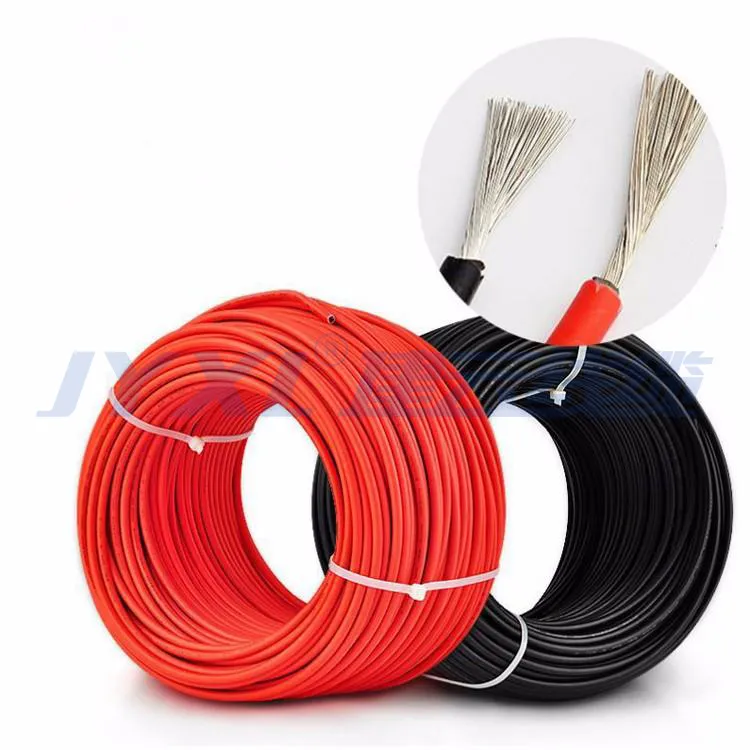Time: 2025-04-30 01:53:38 Source: Henan Province Jianyun Cable Co., Ltd.

Solar wiring refers to the network of cables and electrical components that connect solar panels to the inverter, battery storage (if used), and the home’s electrical system or grid. It primarily handles DC (direct current) from the panels, which is converted to AC (alternating current) for home use (e.g., 230V, as discussed in prior AC/DC contexts).
Function: Solar panels generate DC electricity (e.g., 48V, as discussed) when sunlight hits the photovoltaic cells. This DC power travels through solar cables (e.g., 4mm² or 6mm²) to an inverter, which converts it to AC (e.g., 230V). The AC power is then distributed to the home’s electrical panel (e.g., via 14-2 NM-B wiring, as discussed) to power appliances or feed into the grid. If a battery is included, DC power is stored and later converted to AC as needed.
Safety and Efficiency: Solar wiring must minimize voltage drop (e.g., <3%), withstand environmental conditions (e.g., 50°C in Saudi Arabia, as discussed), and comply with standards (e.g., IEC 61730 for solar cables). Proper grounding and protection devices (e.g., breakers) ensure safety.
Solar wiring is like a “pipeline system” for energy—the panels are the “source” (a spring), the cables are the “pipes” (carrying water), and the inverter is the “filter” (converting DC to AC), delivering usable power to the “house” (electrical system).
Solar wiring involves several components, each playing a specific role in transferring and managing electricity. The table below summarizes these components:
| Component | Function | Example |
|---|---|---|
| Solar Cables | Transmit DC power from panels to inverter | 6mm² (10 AWG), XLPE-insulated |
| Inverter | Converts DC to AC for home use | 5kW inverter, 48V DC to 230V AC |
| Circuit Breaker | Protects circuits from overloads | 30A DC breaker for solar circuit |
| Charge Controller (Optional) | Regulates battery charging | MPPT controller for 48V battery |
| Grounding Wire | Ensures safety by dissipating fault current | Green/yellow wire to grounding rod |
Solar Cables: Typically 4mm² or 6mm² (10 AWG, as discussed), these cables are UV-resistant (e.g., XLPE insulation) and rated for DC (e.g., 48V), connecting panels to the inverter with minimal voltage drop.
Inverter: Converts DC to AC (e.g., 48V DC to 230V AC), making the power usable for home appliances or grid connection (as discussed in AC/DC contexts).
Circuit Breaker: Protects the system by interrupting power during faults (e.g., a 30A DC breaker for a 10 AWG solar circuit, as discussed in control device contexts).
Charge Controller: Used in off-grid or hybrid systems to manage battery charging (e.g., 48V battery), preventing overcharging and extending battery life.
Grounding Wire: Ensures safety by connecting the system to a grounding rod (green/yellow wire, as discussed), diverting fault currents per NEC or IEC standards.
These components are like the “crew” of a ship—each has a role (cables as “sails,” inverter as “navigator,” breaker as “lookout”) to ensure the “voyage” (power delivery) is safe and efficient.
The solar wiring process involves connecting components in a specific order to ensure safe and efficient power flow. Here’s how it works, with examples tied to prior discussions:
Practical Example: In a Saudi Arabia solar setup (50°C, as discussed), 6mm² cables carry 48V DC from roof panels to a basement inverter, which outputs 230V AC. The AC power feeds into the home’s panel, powering a 230V outlet, while a 48V battery stores excess energy, all protected by breakers and grounding.
Solar wiring works like a “relay race”—the panels “pass” DC power through cables, the inverter “converts” it to AC, and the panel “delivers” it to the home, with safety devices as “coaches” ensuring a smooth race.
Solar wiring connects solar panels to the inverter, battery (if used), and home’s electrical system, transmitting DC (e.g., 48V) from panels, converting it to AC (e.g., 230V) via an inverter, and distributing it through the home (e.g., via 14-2 NM-B). Key components include solar cables (6mm²), inverters, circuit breakers, charge controllers, and grounding wires, ensuring efficient power flow and safety. The process involves generating DC, transmitting it, converting to AC, storing (if applicable), and distributing power, with safety measures like grounding and breakers (per IEC 61730, NEC). Proper solar wiring enables clean energy use in homes, integrating seamlessly with existing systems.